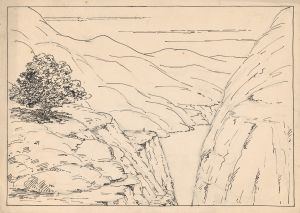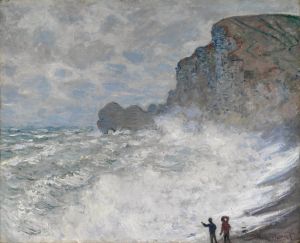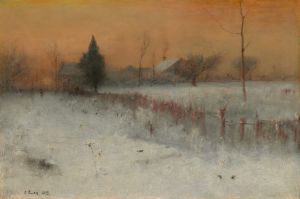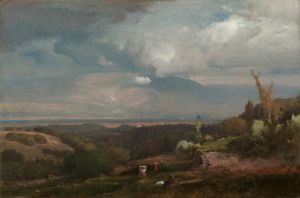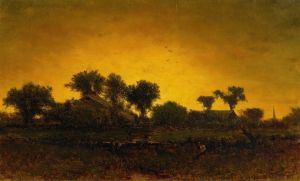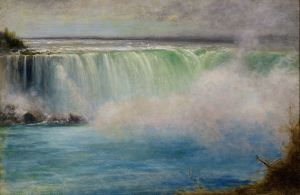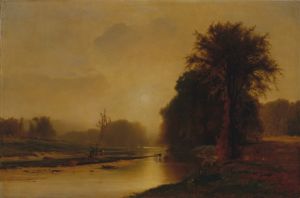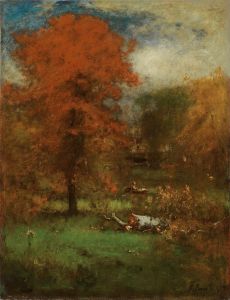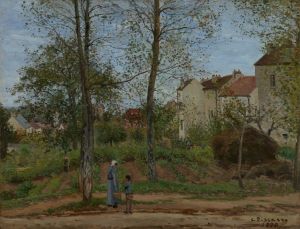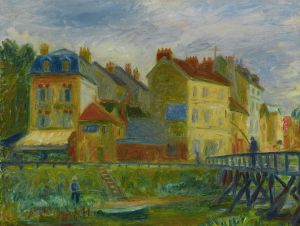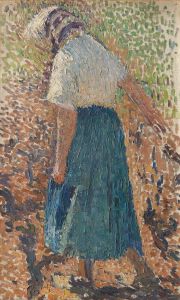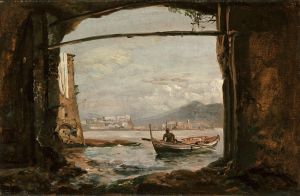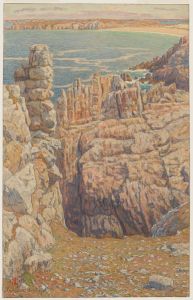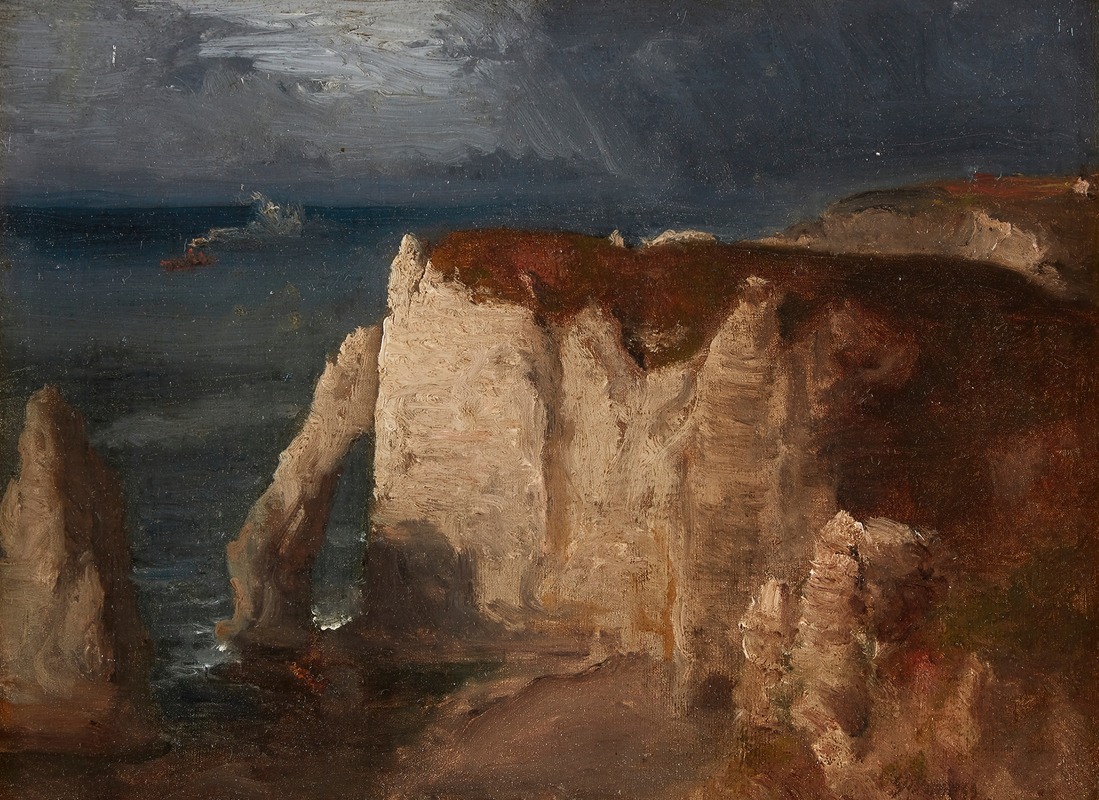
Étretat
A hand-painted replica of George Inness’s masterpiece Étretat, meticulously crafted by professional artists to capture the true essence of the original. Each piece is created with museum-quality canvas and rare mineral pigments, carefully painted by experienced artists with delicate brushstrokes and rich, layered colors to perfectly recreate the texture of the original artwork. Unlike machine-printed reproductions, this hand-painted version brings the painting to life, infused with the artist’s emotions and skill in every stroke. Whether for personal collection or home decoration, it instantly elevates the artistic atmosphere of any space.
Étretat by George Inness is a notable painting created by the American landscape painter George Inness. Inness, born in 1825, is recognized as one of the most influential American artists of the 19th century, known for his contributions to the Hudson River School and later for his role in the Tonalist movement. His work is celebrated for its atmospheric and expressive qualities, often reflecting his interest in spirituality and the natural world.
The painting "Étretat" depicts the coastal town of Étretat in Normandy, France, which is renowned for its dramatic cliffs and natural arches. This location has been a source of inspiration for many artists, including the famous French Impressionist Claude Monet. Inness's interpretation of Étretat captures the serene and majestic beauty of the landscape, emphasizing the interplay of light and shadow on the cliffs and the sea.
Inness visited Europe several times during his career, and his travels significantly influenced his artistic style. His time in France exposed him to the Barbizon School, which emphasized painting en plein air and focusing on mood and atmosphere rather than detailed representation. This influence is evident in "Étretat," where Inness employs a softer palette and a more impressionistic approach compared to his earlier works.
The painting is characterized by its subtle use of color and light, creating a harmonious and tranquil scene. Inness's brushwork in "Étretat" is loose and fluid, allowing him to convey the ephemeral qualities of the landscape. The composition is balanced, with the cliffs and sea forming a natural frame that draws the viewer's eye into the scene. This approach reflects Inness's belief in art as a means of expressing the spiritual essence of nature.
"Étretat" is an example of Inness's mature style, where he moved away from the detailed realism of the Hudson River School towards a more evocative and atmospheric representation of nature. This shift aligns with the Tonalist movement, which focused on mood and emotion, often using a limited color palette and soft, diffused light.
The painting is housed in a private collection, and its exact date of creation is not precisely documented. However, it is generally believed to have been painted during one of Inness's trips to Europe in the late 19th century. As with many of his works, "Étretat" reflects Inness's philosophical and spiritual beliefs, particularly his interest in the ideas of Emanuel Swedenborg, a Swedish theologian whose writings on the interconnectedness of the physical and spiritual worlds deeply influenced Inness.
George Inness's "Étretat" remains a testament to his ability to capture the essence of a landscape, transcending mere visual representation to evoke a deeper emotional and spiritual response. His work continues to be celebrated for its contribution to American art and its enduring influence on subsequent generations of artists.





